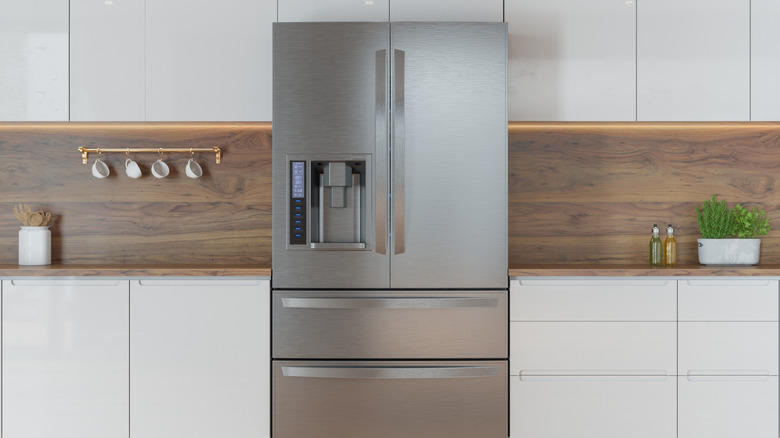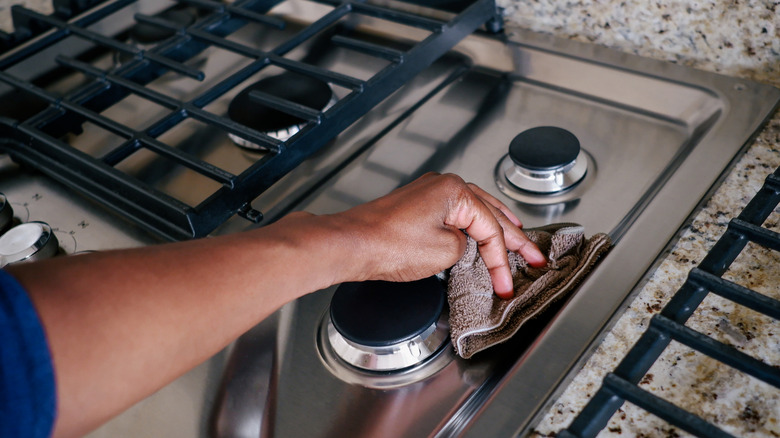The Best Way To Clean Stainless Steel Appliances To Keep Them Shining Like New
We may receive a commission on purchases made from links.
Stainless steel can be a showstopper in any room — that is, until smudges and streaks steal the spotlight. Dullness also has a subtle way of creeping up on stainless steel appliances over time and can make your once modern, polished stovetop appear as though you purchased it from an antique store. The truth is that stainless steel appliances are high-maintenance, and cleaning them regularly is a bit of a must. And of course, you can use natural cleaning ingredients to clean them, and they may work well for the job. But the key to getting the bright mirror finish you're looking for is often just applying a good, dedicated stainless steel cleaner. In addition to this, you'll also need to use the right technique when cleaning the stainless steel so that you leave it free of blemishes, streaks, and swirls.
Thankfully, there is a simple, foolproof method that is both effective and can restore that factory-fresh shine, and gentle enough to prevent scratching the metal. And you only need a few supplies to make it happen, including protective gloves, microfiber cloths, and stainless steel cleaner such as the Zep Stainless Steel Cleaner and Polish. Once you see the difference in the look of the metal, it's the kind of task you'll want to keep in rotation. And if you're spring cleaning your home as part of your annual routine, it's definitely a job you'll want to include.
Step-by-step method to polish stainless steel & more tips
One common mistake made with stainless steel appliances is using an abrasive product to clean them. Be sure to take a look at the owner's manual to note any cleaners or materials that should be avoided. To clean your stainless steel appliance, start by removing any items on it, such as utensils or decorative pieces. Next, shake the cleaner well for about 15 to 30 seconds and spray it onto your microfiber cloth, not directly onto the metal. Then wipe down the surface with your cloth.
As you're cleaning, take note of any faint horizontal or vertical lines (also known as striations or grain) in the metal surface, and wipe in the direction of these lines. This helps avoid pushing any dirt or debris further into the metal. After you've finished cleaning the surface, fold the cloth (or use a clean one) and wipe off the polish. Again, make sure to go in the direction of the grain. Now, it's time to buff the stainless steel. Take another cloth and go over the surface again. This step helps create a quality shine, so be sure to remove any leftover polish as you do this.
If you're struggling to loosen up stubborn grime, wiping against the grain a few times can help loosen it. In terms of stains, remember it's always best to remove any stains on the steel as soon as they happen. Doing so will prevent them from setting in, something that often makes them more challenging to remove later.

